1-10 of 21 results
-
Ice Cloud Parameterizations and Aircraft Icing
PI Dorothea Ivanova
Ice and mixed phase clouds have an important impact on aviation, but they are often poorly represented in the models.
This proposal seeks to help improve our understanding of aircraft icing occurrence through better parameterizations of the ice microphysical cloud properties. The goal of this proposal is to create a new Global Climate Model (GCM) parameterization for Arctic ice and mixed-phase clouds, and explore possible relationship between different type size distributions (SDs), and airplane icing. The study will utilize data for different ice crystal size spectra in arctic cold clouds, and data for the corresponding airplane icing occurrences. The PI has already developed and published parameterizations for mid-latitude and tropical ice clouds (Ivanova 2001, Ivanova 2004, Mitchell and Ivanova 2006, Mitchell et al. 2008). The tropical and mid-latitude schemes predict different behavior of the SDs for the same ice water content (IWC) and temperatures. As temperature decreases beyond -35C, the concentration of the small crystals is enhanced with the tropical scheme, but the opposite occurs with the mid-latitude scheme. This finding indicates that the microphysics properties of tropical and mid-latitude cold clouds are considerably different for the same IWC. It may also point to the different mechanisms by which convective and non-convective cold clouds are generated. Clearly, there is a need for Arctic and polar ice cloud parameterization, and for a study to explore the possibility of a relationship between the environmental conditions (temperature, IWC, supercooled liquid water content), different predicted size spectra, and aircraft icing. Cold cloud interactions with aircrafts that fly through them require knowledge of cloud microphysics. Aircrafts must be designed to fly into supercooled clouds, or they must avoid those clouds in order to prevent problems associated with airframe and engine icing. De-icing or anti-icing systems must be engineered to withstand reasonable extremes in terms of ice water content (IWC), supercooled liquid water content (LWC), ice particle size distributions (SDs), and temperature. The aircraft design or certification envelopes (FAR 25, Appendix C; Federal Aviation Administration, 1999) were developed before the advent of modern cloud physics instrumentation. In the case of ice and mixed-phase clouds, data from the new arctic field campaigns suggest that cloud temperature is one of the main parameters governing cloud microstructure, the size distributions, and ice water content affecting aircraft icing. Korolev et al. (2001) showed that the cold cloud size distributions may depend on the value of the ice particle size assumed. Parameterizations of ice particle sizes for mid-latitude and tropical ice clouds (Ivanova et al., 2001, Boudala et al., 2002; Ivanova 2004; Mitchell et al., 2008) appear in recent literature, and were implemented in the U. S. Community Climate model 3 (CCM3) Global Climate Model (GCM), and U.K. MetOffice GCM, but little is done to study high latitude cold clouds size distributions and how they may be related to the aircraft icing.Contact Information
Categories: Faculty-Staff Undergraduate
-
The Effect of Using PollEverywhere Technology in Large-Lecture Classrooms
The purpose of this research is to investigate the impact of using PollEverywhere web software on student engagement in large lecture courses.
A pilot study was completed in the fall of 2013 with a follow-up study occurring in the spring of 2014. The results of the pilot study will be published in the proceedings of the American Society for Engineering Education.Categories: Undergraduate
-
Wingsuit Aerodynamic Performance Measurement and Design Improvements
PI Timothy Sestak
Wingsuit flight and wingsuit design is in its pioneering stages. Development of wingsuits with regards to aerodynamics is rudimentary, and has been done primarily by a process of trial and error, and lacks solid aerodynamic foundation. A wingsuit is essentially a ram-air inflated airfoil structure with a human pilot inside.
This research proposes a phased exploration of 1) the measured performance of current wingsuit technologies and 2) an investigation of basic changes in materials and construction that have the potential for significant improvements in lift and drag, resulting in increased glide ratios. Initial research will take place in the ERAU Prescott Campus, subsonic - closed circuit, 32” x 45” wind tunnel. The first phase of this research will test, record, and compare the effect on performance of various materials and fabrics currently used by wingsuit manufacturers on a well-documented rigid airfoil shape and a typical wingsuit airfoil. Materials tested will include typical woven fabrics commonly used on current wingsuit designs and more exotic materials like laminated X-ply reinforced monofilm commonly used on windsurfer and competitive yacht sails. The aerodynamic effects of contaminated airfoils vs smooth surfaces is well known but there is little documentation concerning the use of fabric on wing surfaces and of airfoils of the size, operating speeds and Reynolds numbers of typical wingsuit sized airfoils. Many wingsuits use fabrics and materials believed to be poor aerodynamic choices or improperly positioned on the airfoil for best performance. Phase One will establish a baseline of data to empirically demonstrate and compare the effect of typically used materials and potential alternate materials on wingsuit airfoil performance. This will provide baseline data for following studies. Phase Two will repeat the performance data collection of phase one using ram-air inflated wing configurations similar to those used in current wingsuits. The lift and drag performance of typical ram-air wingsuit airfoils and the effect on lift and drag of differing materials used to construct ram-air inflated airfoils will be measured. Phase Three will examine the effects of wing deformation due to in-flight dynamic pressures. Then techniques for stabilization of wingsuit lifting shapes and surfaces to counter deformation by dynamic pressure will be examined. This phase will include the human factors elements of designing wingsuit components that are flexible, allowing a full range of motion to the human pilot necessary to safely fly the wingsuit and then deploy and operate a parachute for landing, while being aerodynamically stable and able to retain aerodynamic shape at high dynamic pressures. Phase Four will use the information developed from the previous research to explore a range of airfoil and membrane wing configurations both with Computational Fluid Dynamic (CFD) modeling and wind tunnel testing to derive human factors compatible wingsuit configurations that offer significantly improved performance over current designs. Significant human factors constraints exist in developing new concepts for wingsuits. The final concepts/products must be able to perform on a human worn suit, capable of donning and doffing in a reasonable amount of time, and while being worn enable the wearer to walk to, board, and safely exit while in flight, a typical aircraft used for skydiving (i.e. Twin Otter with inflight jump door) without unusual discomfort or the need for special accommodations. For manufacture and production, materials and processes must be compatible with customization to the body sizes of the full spectrum of wingsuit users. The final product must be able to be manufactured in a reasonable amount of time and cost, be durable enough to last for approximately 500 normal use flights without repair or unserviceable wear, and be affordable to the customer within the current range of wingsuit costs ($1500 to $2500 for a custom made, fit to the individual, high performance wingsuit). In this work we intend to use the significant previous work performed concerning ram-air inflated wing aerodynamics and high performance sail and membrane wing aerodynamics. Previous work is mostly at much lower airspeeds and with larger surfaces and Reynolds numbers than wingsuit aerodynamics, but should offer significant clues toward useful paths of research. CFD analysis software designed for high performance nautical sails will be a candidate technology to model and analyze potential designs to compare against wind tunnel testing of proposed modifications. Follow on research would involve incorporation of the resulting concepts into full sized wingsuits with wind tunnel and inflight testing. Collapsible ram-air airfoils developed for this study are also applicable to Unmanned Aerial Vehicle (UAV) operations, reducing the size of pre-deployment wings and the necessity for large bulky transport and storage. Follow on research will seek funding for applications of this technology to UAVs.Categories: Undergraduate
-
2017 PICMath: Mie Scattering Diagnostic
PI Mihhail Berezovski
CO-I Clayton Birchenough
CO-I Christopher Swinford
CO-I Tilden Roberson
CO-I Sophie Jorgensen
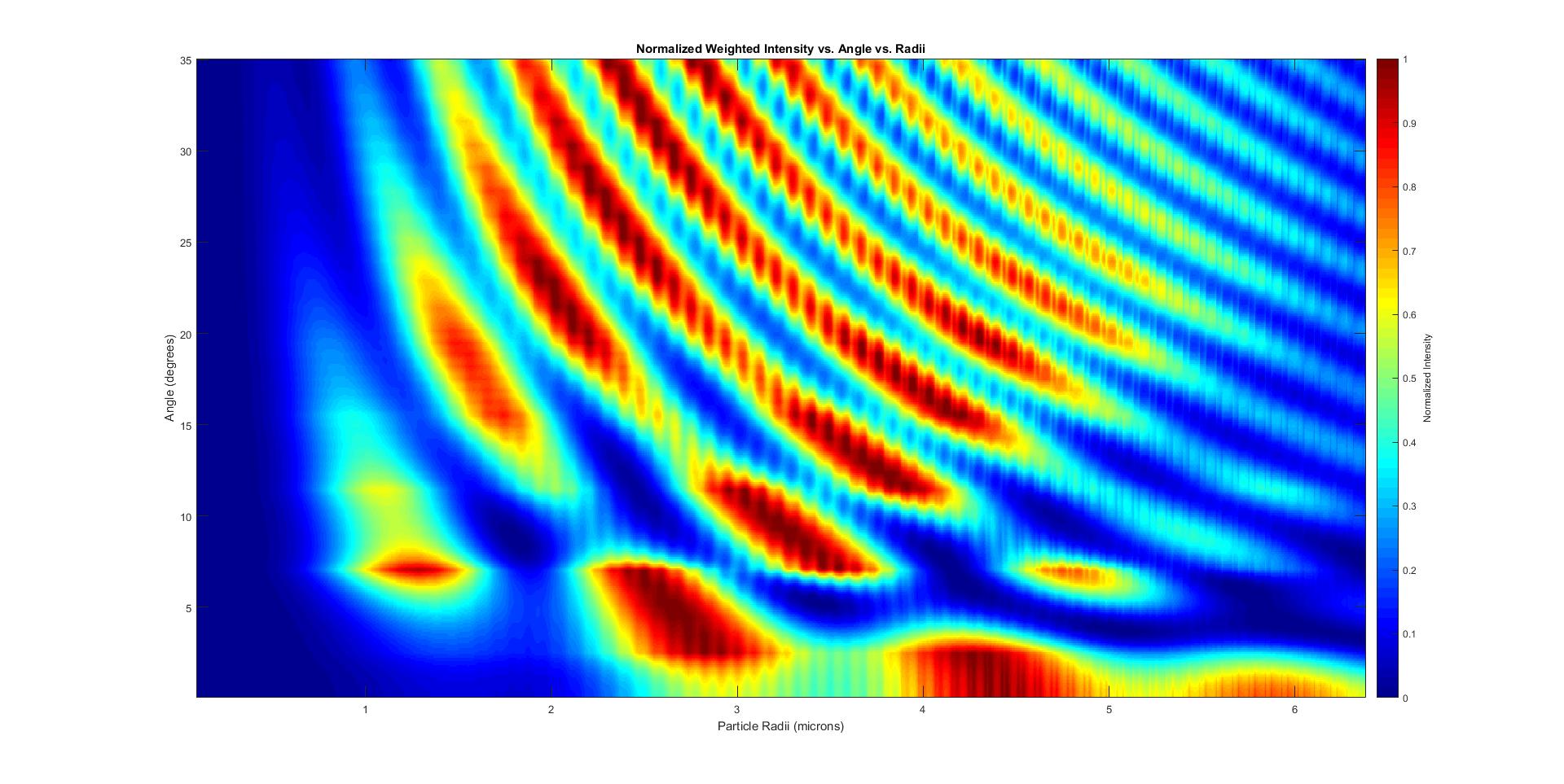
The Signal Processing and Applied Mathematics Research Group at the Nevada National Security Site teamed up with Embry-Riddle Aeronautical University (ERAU) to collaborate on a research project under the framework of PIC math program with challenge to make a recommendation about whether to use a technique, used in the air quality industry, called Mie scattering, and repurpose this method to measure particle sizes that are emitted from a metal surface when it's shocked by explosives.
Support for this project is provided by MAA PIC Math (Preparation for Industrial Careers in Mathematics) Program funded by the National Science Foundation (NSF grant DMS-1345499).
The Signal Processing and Applied Mathematics Research Group at the Nevada National Security Site (NNSS) teamed up with Embry-Riddle Aeronautical University (ERAU) to collaborate on a research project under the framework of MAA PIC math program with challenge to make a recommendation about whether to use a technique, used in the air quality industry, called Mie scattering, and repurpose this method to measure particle sizes that are emitted from a metal surface when it's shocked by explosives.
Using simulated data derived from Mie scattering theory and existing codes provided by NNSS students validated the simulated measurement system. The construction data procedure was implemented with an additional choice of discretization technique: randomly distributed particle radii and incrementally discretized particle radii. The critical regions of sensors position were determined.
Support for this project is provided by MAA PIC Math (Preparation for Industrial Careers in Mathematics) Program funded by the National Science Foundation (NSF grant DMS-1345499).
Major outcomes:
- Team presented results at 2017 MathFest as poster presentation
- Results were presented at ERAU campus show case
- Results were presented at 2018 ERAU Discovery Day
- Clayton Birchenough got internship with Nevada National Security Site for Summer 2017 and Summer 2018
Results were published in:
Kasey Bray, Clayton Birchenough, Marylesa Howard, and Aaron Luttman. (2017) Mie scattering analysis, National Security Technologies, LLC internal report. - Tilden Roberson got CO-OP with NASA's Armstrong Flight Research Center for fall 2017
- Tilden Roberson is currently pursuing his Master Degree at ERAU
- Joao Rocha Belmonte got internship in Germany with MTU Aero Engines for fall 2017
- Joao Rocha Belmonte is currently pursuing his Master Degree at ERAU
- Clayton Birchenough won 2nd place for poster presentation at 2018 ERAU Discovery Day
Categories: Undergraduate
-
ERAU Industrial Math Project: Quantifying Uncertainties in Image Segmentation
PI Mihhail Berezovski
CO-I Jean-Lucien Gionet
CO-I Tori Hoff
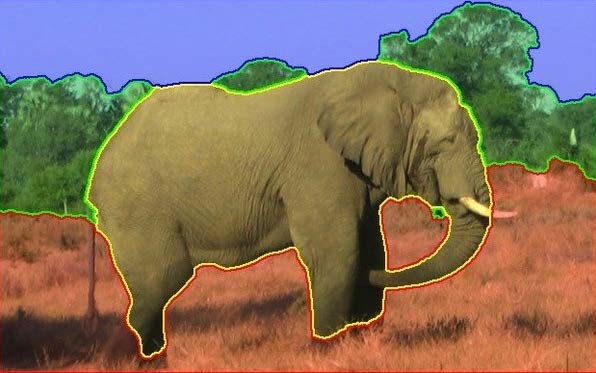
The Signal Processing and Applied Mathematics research group at the Nevada National Security Site (NNSS) is excited to partner with students at Embry-Riddle Aeronautical University to develop a rigorous statistical method for characterizing the effects of user interaction on supervised image segmentation.
One of the most important methods for understanding dynamic material experiments, like high-explosives driven implosion studies or laser driven shock studies, is to take pictures of some type and perform quantitative analyses of the images. In many cases, what we are most interested in are regions of different materials in an image or regions of the same material in different states. The concept of image segmentation is the process of separating different parts of an image into different categories.
Google Scholar returns about 2.3M results for image segmentation, so there are a lot of ways to do it. Most such ways, however, fall into the category of qualitative image analysis, which means one just wants to recognize whether an object exists in an image or make qualitative statements about the different regions of an image. Scientific analysis of experiments requires quantitative imaging, and it is important to accurately find the boundaries between the different regions, as well as assess the uncertainties associated with the boundaries. In some sense, we would like to draw error bars around the boundary curves. In order to accomplish this, our team at the NNSS has developed a new statistical method for image segmentation, called Locally Adaptive Discriminant Analysis (LADA).
Because this algorithm provides quantitative analysis of material boundary locations based on local information, enough local information must first be provided to be of practical use. Here, the user must select a large portion of the image as training data to aid in the identification of the boundaries. The purpose of informing the algorithm through local information is due to the fact that our images often change in intensity depending on where the material is located in the image,
for example, due to lighting heterogeneity. The issue is that there are different portions of that image with different intensities that correspond to the same material. By selecting training data only locally, the algorithm doesn't get confused by training data of the same material in different regions of the image.The primary questions that we would like the ERAU team to address are
1. How do the boundaries that are computed by LADA vary, as the user-selected training data are varied? (If two people select different training data, how different are the resulting boundaries?)2. How does one even quantify the differences between two sets of boundaries computed for the same region?
3. How do the confidence bands that are computed by LADA vary, as the user-selected training data are varied?
4. How does one quantify the differences between two sets of confidence bands for a region's boundary?
5. Can we quantify how boundaries and uncertainties are affected by the sheer amount of training data provided? (Does doubling the amount of training data cut the uncertainties in half?)Categories: Undergraduate
-
ERAU Industrial Math Project: Predictive Analytics in Child Welfare
PI Mihhail Berezovski
CO-I Maegan Revak
CO-I Daniel Oldham
CO-I Betiay Babacan
CO-I Nathan Foster
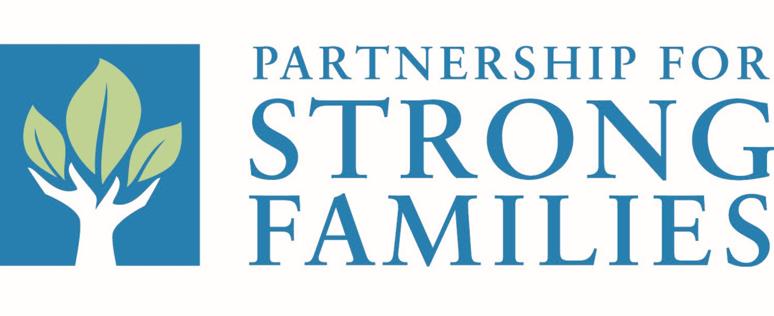
The purpose of this project is to study the data provided by Partnership for Strong Families (PSF) and identify any factors that could lead to a child being removed from his/her home multiple times.
The Partnership for Strong Families (PSF) is a child welfare organization headquartered in Gainesville, Florida helping to serve 13 counties in northern Florida. PSF is a service provider for The Florida Department of Children and Families (DCF). DCF estimates that, within PSF’s area, approximately 45 children are removed every month from their parents’ (or guardians’) care. This is equivalent to approximately 5-6 children per 100 alleged victims of child abuse.
There is a clear need to identify, as early as possible, children who are at risk. As more data is collected, tracking methodologies need to be developed to predict the likelihood of a child entering (or reentering) the state system. The purpose of this project is to examine removals within PSF’s area over the last 7 years and to potentially identify factors that lead to a child’s re-entry into the state shelter system.Children are removed from their parents’/guardians’ care due to verified findings of allegations called into the Hotline. Parents are given a Case Plan to complete to provide them with the tools for the children to return safely to their family home. Reunification occurs once PSF, DCF and the Court agree that the children should be safe in the home when returned.
In generic terms, we will attempt to look at children who were separated from their parents then reunified at some later point. The question is whether there are any quantifiable indicators within the case that, when assigned an unknown weight, will determine whether we can predict a child will be removed again. If there’s a relatively high likelihood of removal, then perhaps services can be provided to the family to ensure the child will be safe and not need to be removed.
This project is sponsored by ERAU Office of Undergraduate Research through IGNITE grant.
Categories: Undergraduate
-
ERAU Industrial Math Project: OneSky Optimization
PI Mihhail Berezovski
CO-I Jose Gachancipa Parga
CO-I Timothy Mitchell
CO-I Ian Young
CO-I Ian Mungovan
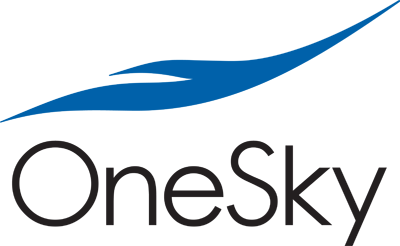
OneSky Flight supports the technology needs of five established private jet brands: Flexjet, Sentient Jet, SkyJet, PrivateFly, and Sirio. One key function required by these businesses is fleet optimization. The ultimate goal for the OneSky Optimization project is to create a new optimizer that works across all of the OneSky brands.
This is the exercise of matching available aircraft with trips that need to be flown for customers. There are many possible conditions, stipulations, and goals in fleet optimization depending on the business. For instance, Flexjet is a fractional ownership brand that has its own fleet of aircraft that is used to meet owner needs. However, Sentient is a charter broker brand that does not own any aircraft, and instead, works with various operators’ aircraft to meet customer needs. In working with Embry-Riddle Aeronautical University, we hope to develop our own optimization algorithms and solvers to eliminate the need for the mathematical engine, CPLEX, which is currently being used.
One strategy that has been used for this type of problem is to create a set of ten to twenty optimization algorithms, develop heuristics that take care of constraints, utilize machine learning to train the algorithms based on historical data, and create criteria for identifying the best solution from the set of results.Categories: Undergraduate
-
ERAU Industrial Math Project: Characterizing Seismic Events through Advanced Data Analytics
PI Mihhail Berezovski
CO-I Lawrence Acchione
CO-I Nathaniel Arzola Lilly
CO-I Dhairya Chokshi
CO-I Jessica Haselwood
CO-I Paige Rasmussen
CO-I Nikolaus Rentzke
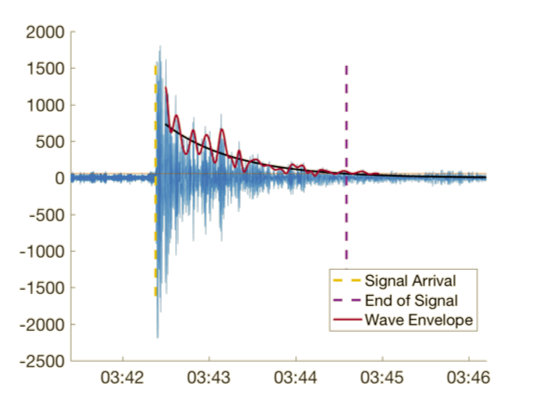
The Signal Processing and Applied Mathematics research group at the Nevada National Security Site, is seeking to collaborate with students at Embry-Riddle Aeronautical University to develop advanced data analytics methods for characterizing seismic events in the southwest United States as near-field earthquakes, far-field earthquakes, or non-natural seismic events, using publicly available seismic data.
One way of monitoring whether other countries are engaging in explosives-driven testing of weapons is to measure seismicity from the events, but this is only interesting if we can correctly characterize a seismic event as an:
- earthquake,
- industrial explosives event (mining, construction, etc.),
- or an explosives test.
The first step is to simply be able to distinguish between natural and non-natural seismic events. Since the Nevada National Security Site engages in explosives-driven tests - and is in an area of active earthquake activity - it is a natural test bed for developing data analytics approaches to classifying signals as natural or non-natural. Being a "test bed" means that, in addition to the measured signals, we have some ground truth information, meaning we know when earthquakes and explosives tests actually happen.
Larger-scale experiments, like the North Korean nuclear tests, can be seen at much larger distances, so even in Nevada we can measure seismic signals from nuclear tests. Figure shows a seismic measurement in Nevada from North Korea's September 2017 nuclear test.
Primary Goal: Develop analytics methods for differentiating near- field, small earthquakes in Nevada and southern California, from far- field, large earthquakes around the world, from non-natural seismic events.
One of the primary challenges in analyzing seismic data is that the data is collected 24 hours per day, 7 days a week, but actual seismic anomalies - either natural or not - occur relatively rarely.
Thus a first step in the analytics is to develop a technique for combing through the data to find anything that looks like an anomaly. The second task will be to classify the anomalies.Categories: Undergraduate
-
NREUP: Predictive Analytics for Dynamic Pricing in Private Aviation
PI Mihhail Berezovski
CO-I Mariah Marin
CO-I Camryn Wills
CO-I Mafalda Soares

OneSky Flight supports the technology needs of four established private jet brands; Flexjet, Sentient Jet, PrivateFly, and Sirio. One key function required by these businesses is trip pricing. This is the exercise of determining the appropriate price for a trip, considering many factors. Today, this process is manual. The ultimate goal of this project is to create a dynamic pricing tool that generates an appropriate price for trips in the US and EU. There is a large part of this project that needs to be addressed: Event Calendar. The Event Calendar includes a factor for each day of the year. These factors are based on the events/holidays that happen throughout the year and their impact on the demand for days on and surrounding the events/holidays. Support for this project is provided by the National Research Experience for Undergraduates Program (NREUP) of the Mathematical Association of America funded by the NSF Grant #1950644.
OneSky Flight supports the technology needs of four established private jet brands; Flexjet, Sentient Jet, PrivateFly, and Sirio. One key function required by these businesses is trip pricing. This is the exercise of determining the appropriate price for a trip, considering many factors. Today, this process is manual. The ultimate goal of this project is to create a dynamic pricing tool that generates an appropriate price for trips in the US and EU. There is a large part of this project that needs to be addressed: Event Calendar. The Event Calendar includes a factor for each day of the year. These factors are based on the events/holidays that happen throughout the year and their impact on the demand for days on and surrounding the events/holidays.
In order to build the list of possible events that affect the intensity of flights extended data analysis was performed. Along with processing 3 years of raw flight data (~8,000,000 single flights), students did independent research on theory behind dynamic pricing. Team determined the patterns in raw data and identify anomalies as possible event, mapping them and sorting them in holidays, sport events, extreme weather events, etc. based on open sources, also recognized the local and global patterns before identification. The corresponding quantitatively model for model of dynamic pricing algorithm was developed. It is the hierarchical model with primary and secondary factors: considering normal weekly traffic, seasonal increments, and day of the week of a selected event. With given three years of flight history, model was build using any two years and validated using third on: the prediction of demand for third year was modeled and compared with third year actual data.
Support for this project is provided by the National Research Experience for Undergraduates Program (NREUP) of the Mathematical Association of America funded by the NSF Grant #1950644.
Categories: Undergraduate
-
Wind Powered Water Pump
PI Jeff Brown
CO-I Christopher Hays
The vision of the Wind-Powered Water Pump project is to develop a template for the development of long-range water transportation in areas where no other external energy sources are available.
In the developing world, the transportation of water from its source to an area of need can be troublesome. Many of the men and women in developing communities must exert strenuous amounts of effort to walk the miles to retrieve the few gallons of water that will be used over the following day(s). As representatives of the Honors Students Association, we propose a solution to this problem – a wind-powered water pump. This pump will eliminate the trek to get water, by efficiently and cheaply transporting the water to them.
Due to the lack of infrastructure and no external source of energy, the water pump must be powered with energy acquired by its own means. The project team will be conducting research into the efficiency and feasibility of multiple designs to accomplish this goal. The project will be divided into teams, each with a unique task deemed necessary to the completion of the project. Each team will be comprised of at least one, possibly two upperclassmen as leads and then primarily first-year students within the Honors Students Association. The team leads will be put into contact with a willing faculty advisor who will serve as a guide through the more challenging aspects of the project. Through this structure, teams will be able to accomplish their respective tasks while making progress toward accomplishing the project’s goal.
Categories: Undergraduate
1-10 of 21 results
